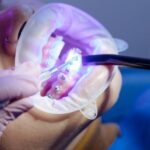Everyone knows exercise can make you feel better, even though it’s often accompanied by discomfort. Both physical therapy and exercise work on the same basis. They both allow your brain to release endorphins. These mighty hormones dwell within the nervous system and the brain and, when released by overexertion, they have a calming effect. This effect can produce significant benefits for improving your health following surgery.
It’s correct, moving stiff and sore body parts after surgery might seem odd. The release of this powerful hormone will eventually counteract and lower your pain level.
The ability to move freely and care for oneself is of primary concern before a hospital releases a patient. Being able to care for yourself is vital before returning home. The way to speed up your homecoming is to comply with everything your physical therapy instructor wants you to do. By doing this, you’ll be able to return to your routine, everyday activities quickly.
Another advantage of this treatment is increased mobility. Joints will be strengthened, and muscle tension will be diminished. Even though uncomfortable at first, significant relief can be felt.
Physical therapy has superior benefits for the cardiac patient. The heart is a muscle, and it can be strengthened even following a heart attack.
A medical professional can teach you how to do specific exercises, techniques, and stretches for every affected area of your body. Sometimes equipment, other than just you performing the exercises, is of benefit. The professional has been trained to know exactly what gain can be derived from every treatment.
Their knowledge also includes surgical procedures and the ultimate goals following treatment. All of this works on your behalf to restore you to overall good health and wellbeing not only physically but emotionally. They know precisely how far to push your body to reap the best benefits and get you back on your feet once more.
Not only are exercises for strengthening your muscles and joints used in this treatment, but there are also several other beneficial methods employed. Ice and heat application, ultrasound, and electrical stimulation are a few of the different techniques that a trained professional may choose to use.
Emphasis on strengthening the core of your body is also vital. The core is similar to the foundation of a house, and if you have a weak core, you will have a weak foundation. A weak core can result in injury and many chronic illnesses. An emphasis on the muscles of the pelvis and back are essential to strengthen the core.
Strength building after surgery will help the patient regain the ability to use the knee as it is designed to during our activities of daily living. The knee will strengthen quickly after surgery, of course, depending on the patient and, their overall prior level of function. The muscular endurance, however, will take more time to recover and maybe the last aspect of knee surgery rehabilitation to be completed.
Building muscular endurance surrounding the knee includes concentrating on the quadriceps and the calf muscle. Both play a significant part in the proper functioning of the knee. Having one or the other muscle not up to par, as far as muscular endurance is concerned, it will either affect your ability to walk sufficient distances or, could cause knee buckling which will result in a fall.
Building endurance can be done with several easy exercises
.1 Walking.
Yes, as simple as this sounds, many patients after surgery need to initiate a scheduled program as soon as they have been medically cleared to do so. Walking not only will assist in building muscular endurance around the knees but will help in building overall strength in your entire body. Starting a walking program is comfortable starting with household distances then slowly expanding the miles to outdoors.
2. Stationary Biking.
Stationary biking is an excellent exercise for building endurance. This so happens to be one of my favorites. This is the one I used after my knee replacement surgery, and I found it to pay big dividends. Stationary Biking I feel is the best exercise out there after coming off knee surgery. When starting to bike as with all the activities you have to pace yourself. Starting with five minutes a day, for instance, one time a day, then slowly building for
3. Treadmills.
Though I do not use them myself, they are great for individuals that may need some support walking in a controlled environment. As you get stronger, you can slowly increase the incline as well, and that will build the endurance you require to keep your knees functioning throughout the day.
Building the endurance is merely getting the muscles that are in question to continue contracting and supporting you consistently in a repetitive manner without tiring and causing fatigue that will shut down the muscles.
Generally, muscular endurance and cardiovascular exercise are similar for most of us; however, for older individuals that may be returning from a joint replacement or fractured hip after a fall. Most forms of cardiovascular work other than walking may be out of the question.
Building both strength and endurance in the surrounding muscles that encase the knees will assist you in a safer, more efficient way to carry on our day to day activities.
One thing changes, however. Post-surgery patients are strongly advised to seek out a knowledgeable personal trainer at Priority Physical Therapy. Though patients often feel good, retrieve quickly, and recover workout loss of time.
During post-surgery, you must be especially careful with how you position your bodies. This especially applies to weight machine training. Set machines so that your body doesn’t bend more. Make sure the body doesn’t pass toes when lunging and get adequate rest between training sessions. Licensed personal trainers can help patients maintain proper alignment, encourage, and help evaluate progress.
More Read: Want to Look Better Start with this Simple Exercise.
![]()









